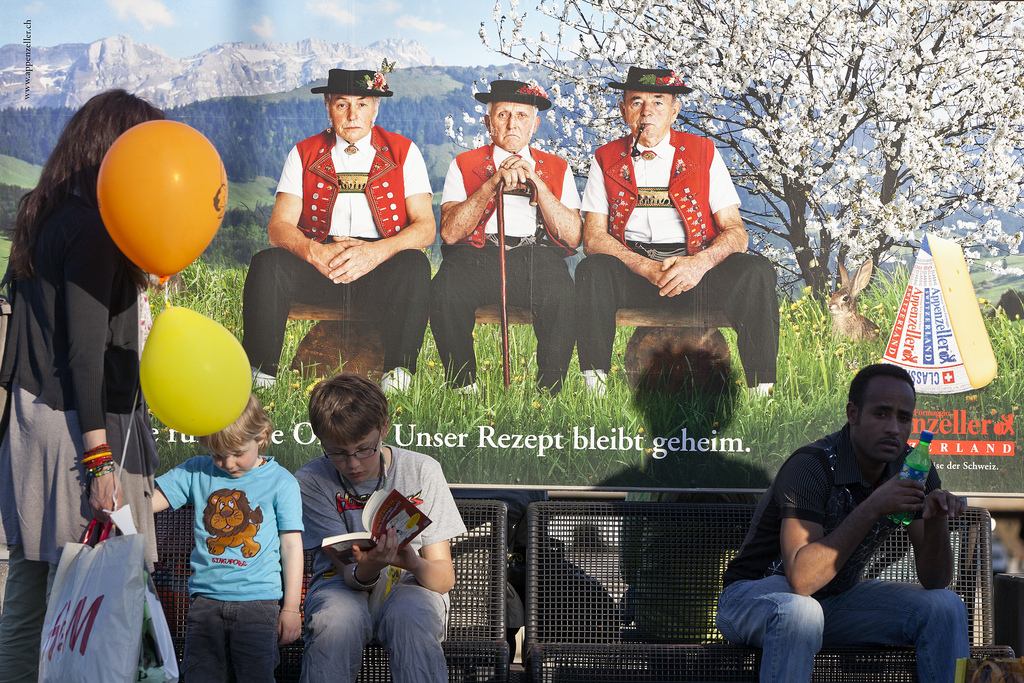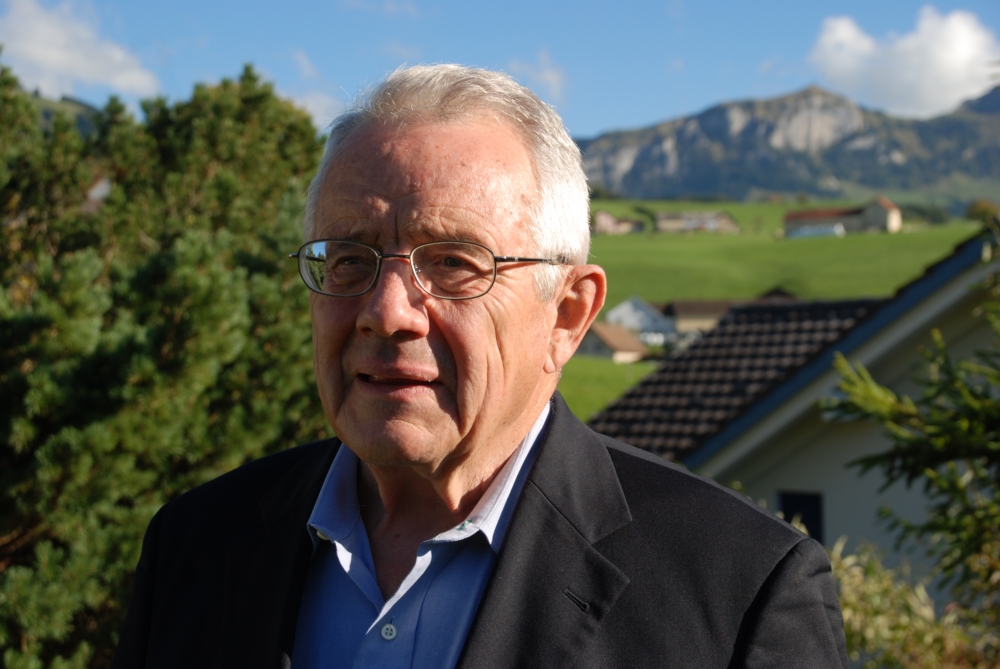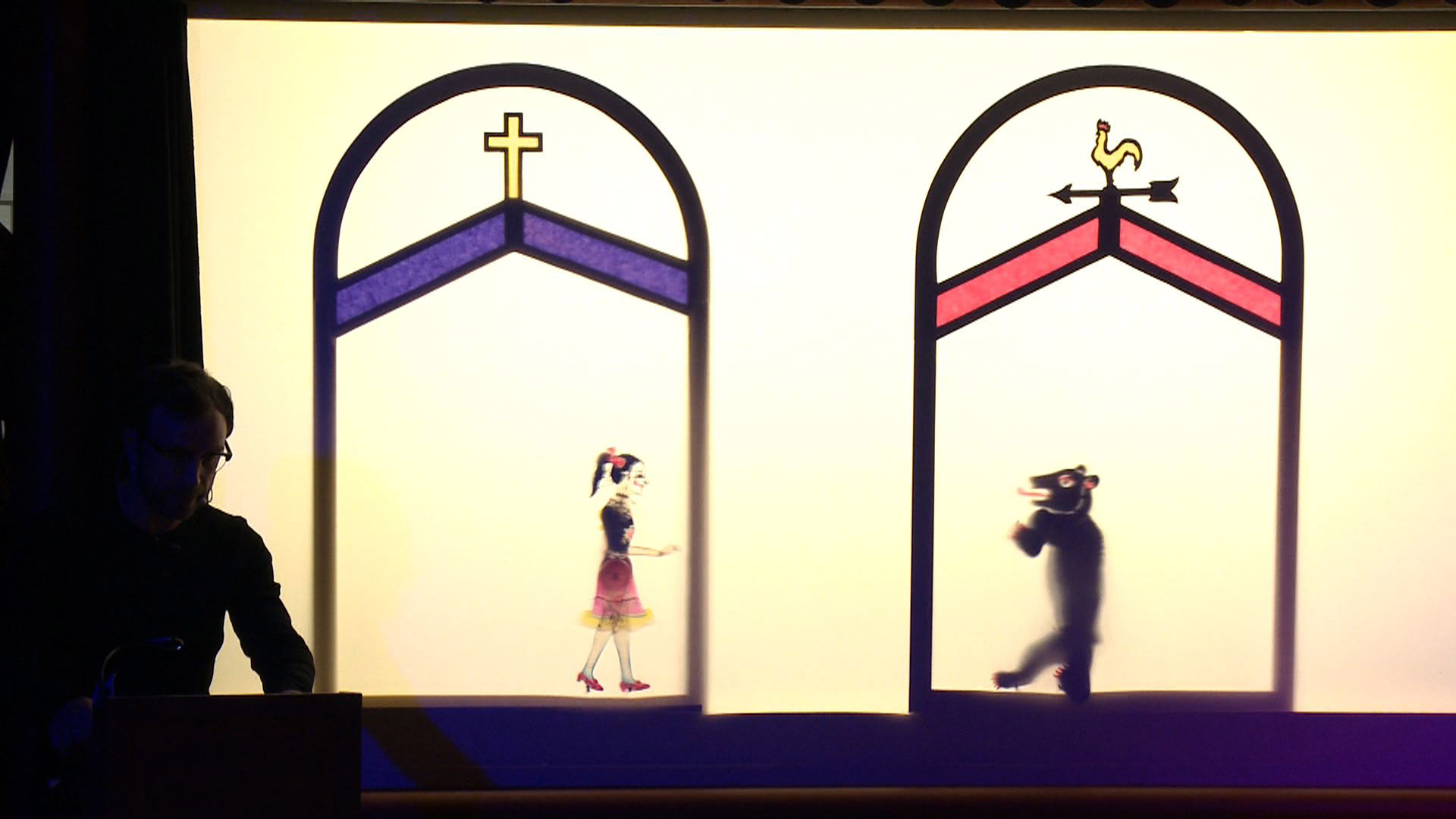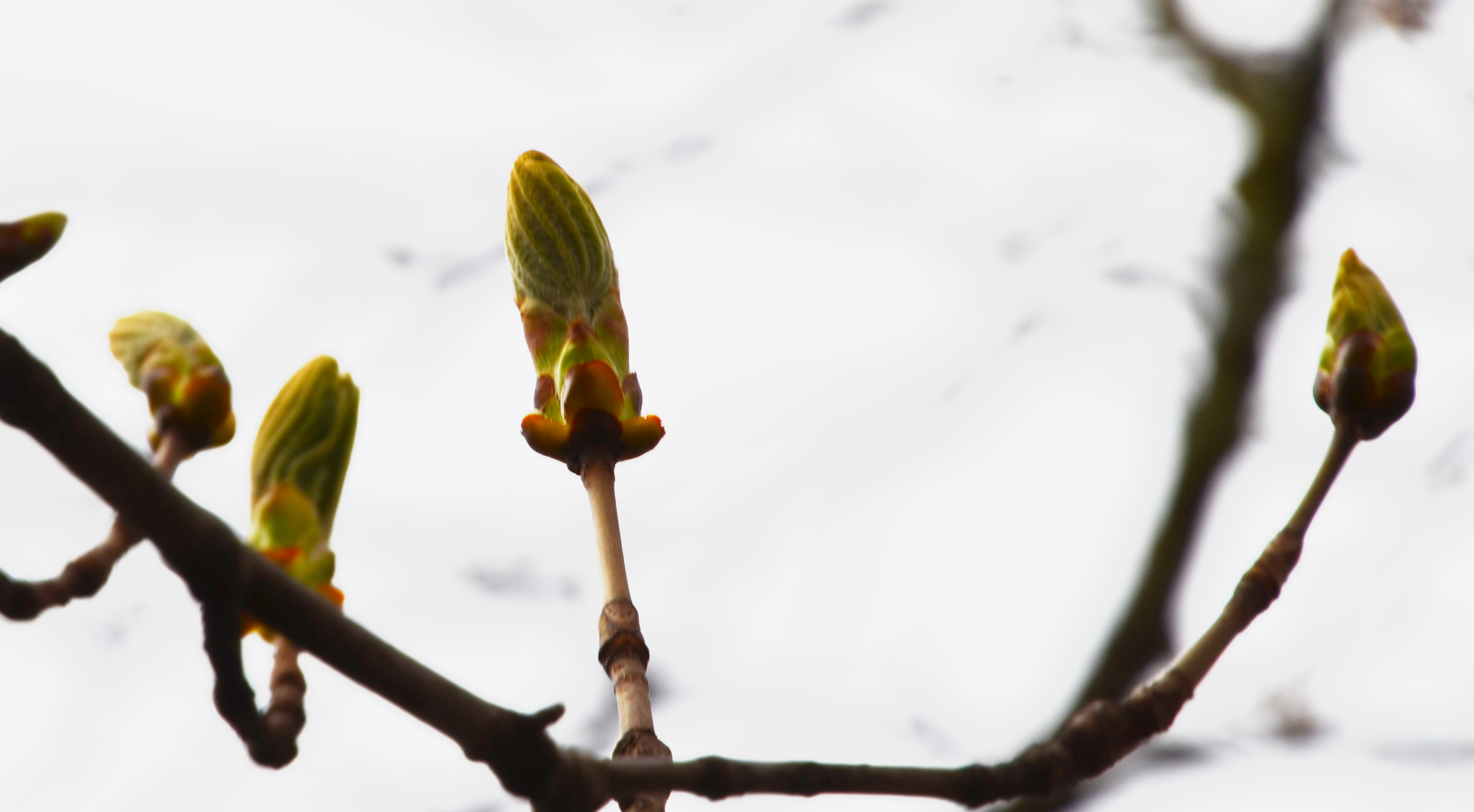Appenzell marks 500 years of Swissness

“We won’t betray our secret”: three determined old men vaunt the merits of Appenzeller cheese in a popular series of advertisements, which exploit some of the values associated with their canton: tradition, love of homeland, and obstinacy.
On December 17 it will be exactly 500 years since the canton of Appenzell joined the Swiss Confederation, and the anniversary has been celebrated throughout the year, culminating in a day-long event attended by this year’s Swiss president, Ueli Maurer.
“With your pride in your homeland and your traditions, you are a wonderful example of the diversity of our country,” he told those gathered.
But while the Swiss rejoice in their diversity, for many non-Appenzellers the small canton in the far north-east of the country – in fact made up of two half cantons, Appenzell Ausser Rhoden and Appenzell Inner Rhoden – is a bit more different than most.
Appenzell is the only canton to be entirely surrounded by another (St Gallen).
The position of the two half cantons with relation to each other is such that the point that the land surveying office defines as the geographical centre of AR actually lies in AI.
It is the only canton not to be served by the federal railways. The train service is run by the Appenzeller Bahnen; much of it is narrow gauge.
AI is one of only two cantons – the other is Glarus – to have kept the Landsgemeinde, or open air parliament, held once a year where all citizens vote on cantonal matters.
Appenzellers are known for their small stature: at 1.761m, the men are 2.8cm shorter than men in Basel, the country’s tallest, according to Zurich University’s Institute of Anatomy.
As a Protestant canton, AR kept the old Julian calendar until 1798 – it rejected the more accurate Gregorian one because it was introduced (in 1582) by a pope. The Silvesterkläuse custom celebrated in Urnäsch to mark the New Year is still held on January 13, which is New Year by the Julian calendar.
Appenzell is proud of its unique traditions and folklore, which include various kinds of music making and striking costumes for both men and women.
The Appenzellers also have a reputation for their wit and sense of humour.
Clichés
“There are lots of clichés about Appenzell, such as that we are very inward-looking, but I think that is really old history,” Daniel Fässler, the landammann – or head of the cantonal government – of Inner Rhoden told swissinfo.ch.
“We like to live with one foot in history – tradition is very important to us – but we are at home in the modern world too. It’s a tightrope, but I think we manage to walk it very well.”
Indeed, in his address to guests at the jubilee event he warned against these clichés.
“They are often used by people simply so that they don’t have to bother with the facts. The reality is often different.”
Be that as it may, a poll published by the image consultancy Campaignfit at the beginning of 2013 showed that for many Swiss, Appenzell – and especially Inner Rhoden – is still narrow-minded and backward.
Perhaps the two half-cantons haven’t yet lived down the fact that both resisted giving women voting rights at cantonal level until long after they received them at federal level. Inner Rhoden held out until 1991, when it was forced to change by a Federal Court ruling; Ausser Rhoden had accepted the inevitable in 1990.
But how many outsiders are aware of the fact that just four years later Ausser Rhoden equalled Bern as the canton with the highest proportion of women in its government? Or recall that in 1999 Inner Rhoden provided only the third woman ever to be elected to the Swiss government, Ruth Metzler?

More
Appenzell: an exception among exceptions
The current landammann of Ausser Rhoden happens to be a woman too, Marianne Koller-Bohl.
“Perhaps it was like a spring awakening, when at last we could take part in politics and be represented in cantonal bodies. Unfortunately what I see today is that women are no longer so interested in politics. That bothers me rather more,” she told swissinfo.ch.
She attributed the long delay in granting women political rights to the force of tradition, and in particular the institution of the Landsgemeinde, the open-air parliament held once a year where all male citizens voted on cantonal business.
“People were afraid of losing this tradition if women took part,” she said.
Indeed, Ausser Rhoden did abolish the Landsgemeinde in 1997, although it lives on in Inner Rhoden with participants of both sexes.
Historian Josef Küng, originally from canton Graubünden, but who has lived in Inner Rhoden for 40 years, had a slightly different explanation for why men in both half-cantons three times rejected a motion to give women voting rights.
“At a time of rapid social change perhaps they were desperately clutching at one of the last ‘remnants’ of the previous ‘male bastion’,” he suggested.
Appenzell celebrates the 500th anniversary of its membership of the Swiss Confederation on December 17, 2013.
It was the last of the original 13 members of the Confederation, which then remained unchanged between 1513 and the French invasion of 1798.
The canton was divided into two half cantons – Appenzell Inner Rhoden (AI) and Appenzell Ausser Rhoden (AR) – in 1597 along religious grounds. AI was formed from those areas which chose to remain Roman Catholic, while areas which went over to the Reformed church made up AR.
The division was overseen by other members of the Swiss Confederation, and took place peacefully.
AI and AR are two of Switzerland’s six half cantons: the others are Obwalden and Nidwalden, and Basel City and Basel Country. Half cantons send only one representative to the Swiss Senate; full cantons are represented by two each.
The word Rhode (plural: Rhoden) is an old word for district; it has been used in Appenzell since at least the 14th century, although the rhodes no longer have an official status.
The capital of AI is Appenzell; that of AR is Herisau.
AI has the smallest population of any canton in Switzerland, at 15,500. AR is bigger, with a population of 53,660 as of December 2012. AI is the second smallest by area after Basel City; AR the fourth smallest. AI has exclaves entirely surrounded by AR.
The landscape is mainly hilly; however, AR includes the Alpstein range, of which the highest point is Säntis, at 2,592 m.
Different mentalities
The two half-cantons behaved similarly as far as women were concerned, but the differences between them go back a long way, to 1597.
They split along religious grounds: Inner Rhoden consists of the districts that remained Roman Catholic; those that adopted the Protestant Reform make up Ausser Rhoden. In contrast to many other areas of Europe, the split was peaceful and democratic: each parish decided which confession it wanted to adhere to. Parishioners who disagreed could move.
Ausser Rhoden cantonal archivist Peter Witschi told swissinfo.ch that although superficially the two parts are similar, there are “huge differences” in the mentalities, which had less to do with the nature of the land, than with religion.
Küng agrees. “The spirit of the Reform stimulated the development of industry and trade in Ausser Rhoden. It became definitely more cosmopolitan – although there were also conservative currents.”
Ausser Rhoden’s textile industry dates back to the 16th century. Exports went initially to Europe, and later – from about the middle of the 19th century – all over the world.
Inner Rhoden, on the other hand, was largely agricultural, and while it exported some dairy products, its markets were relatively close to hand, in the area around Lake Constance.
As Witschi explained, these differences had knock-on effects.
“Two hundred years ago there were lots of people in Appenzell Ausser Rhoden who had been abroad, whether as merchants, or in connection with their jobs. As a consequence, it was much earlier in establishing a good school system than Inner Rhoden. And that’s logical: if you have a better standard of education, if you know foreign languages, it’s easier to move around in foreign markets.”
One thing that the two half cantons certainly share is their attachment to tradition. But in this jubilee year, even that sometimes takes a modern – and cosmopolitan – turn as this intercultural project demonstrates.

More
Shadow puppets tell Appenzell’s history
Reunion – or not?
Whatever the differences, many of the speakers at the jubilee event welcomed the fact that the two halves had worked together over the anniversary year in an unprecedented way.
But Ruth Corminboeuf, a member of the Inner Rhoden cantonal parliament, told swissinfo.ch that the two half-cantons had been growing closer over the last 20 or 30 years.
“We have become more open, and we have realised that working together is a good thing. And that we have to work together because we are so small.”
So will there ever be a single Appenzell again? The last article of the document of separation drawn up in 1597 says: “This division shall last only as long as both parts so desire. They are free to reunite at any time.”
Hanspeter Knöpfel, deputy chairman of the Rüte district council in Inner Rhoden, is in himself an embodiment of cantonal unity: he grew up in Ausser Rhoden – at a time when the other half canton was “so far away, we had nothing to do with it” – and moved to Inner Rhoden when he married.
But asked about political unity, he has his doubts.
“I don’t think we need to merge. Perhaps we need to exploit certain synergies, but we are doing that already. The only advantage might be that we would be stronger as a single canton in our dealings with Switzerland as a whole. But otherwise we don’t need it. We live very well together as neighbours.”
Inner Rhoden
Agriculture continues to be important, employing about 16% of the population.
Just under one third of jobs are in industry.
Just over half the jobs are in service industries.
Ausser Rhoden
Agriculture accounts for just under 8% of jobs.
Just over a third of the workforce is employed in industry, energy and construction.
The service sector employs over 58% of the workforce

In compliance with the JTI standards
More: SWI swissinfo.ch certified by the Journalism Trust Initiative










You can find an overview of ongoing debates with our journalists here . Please join us!
If you want to start a conversation about a topic raised in this article or want to report factual errors, email us at english@swissinfo.ch.